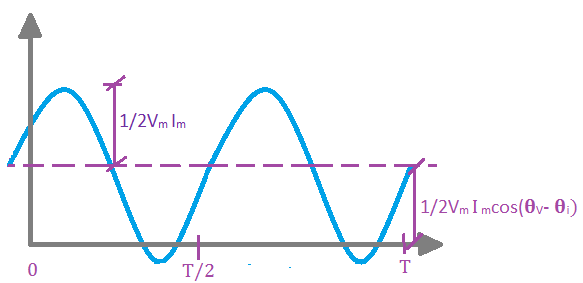Power is said to be the most important quantity in electric
utilities, electronic and even communication systems because these systems
involve transmission of power from one point to another. Using ac in power
generation began after the successful contribution of Tesla. Ac allowed high
voltage power transmission from different power generating plant to the
consumers compared to dc.
INSTANTANEOUS POWER
Instantaneous
power- the power absorbed by an element at any instant of time. It is just the
product of instantaneous voltage v(t) across the element and the instantaneous
current i(t) through it.
We noticed in the sketch of p (t)
above that the power is positive at some part and negative for the rest of the
cycle. This means that when:
p (t)>0: power is absorbed by
the circuit
p(t)<0: power is absorbed by the
source
The conditions stated above is
possible to happen because of the presence of inductors and capacitors which
are considered to be a storage elements. I conclude that power is transferred
from the circuit to the source. Such as if a certain circuit has large voltage and
current, the circuit has large power otherwise, less power. Power is directly
proportional to the voltage and current. Thus, when voltage and current
increases, power also increases.
AVERAGE POWER
Average
power- the average of instantaneous power over one period.
SAMPLE PROBLEM:
If v(t) = 160 cos 50t V and i(t) =
–20 sin(50t – 30°) A, calculate the instantaneous power and the average power.
SOLUTION:
v(t) =160cos(50t)
i(t) = -20sin(50t −30°) = 2cos(50t
−30°+180°−90°)
i(t) = 20cos(50t +60°)
MAXIMUM AVERAGE POWER TRANSFER
The
maximum average power can be transferred to the load if XL=-XTH
and RL=RTH. The load impedance ZL must be
equal to the complex conjugate of the Thevenin impedance ZTH. We
calculate VTH and RTH to get the maximum average power
transfer.
SAMPLE PROBLEM:
For real life application, we also have what we called power matching. For example, you bought an electronic appliance from other country then when you used it, it doesn't work. What would be the possible reasons why this happened? Maybe one of those reasons would be, the electric power in other country doesn't match to the electric power here in Philippines since we commonly used 50-60 Hz ac power. As we noticed, the electrical devices and appliances in our household such as electric fan, television, computer and etc. have its own power rating. This indicates how much power the equipment requires. Over power rating may lead to a permanent damage to the appliance.

For real life application, we also have what we called power matching. For example, you bought an electronic appliance from other country then when you used it, it doesn't work. What would be the possible reasons why this happened? Maybe one of those reasons would be, the electric power in other country doesn't match to the electric power here in Philippines since we commonly used 50-60 Hz ac power. As we noticed, the electrical devices and appliances in our household such as electric fan, television, computer and etc. have its own power rating. This indicates how much power the equipment requires. Over power rating may lead to a permanent damage to the appliance.









